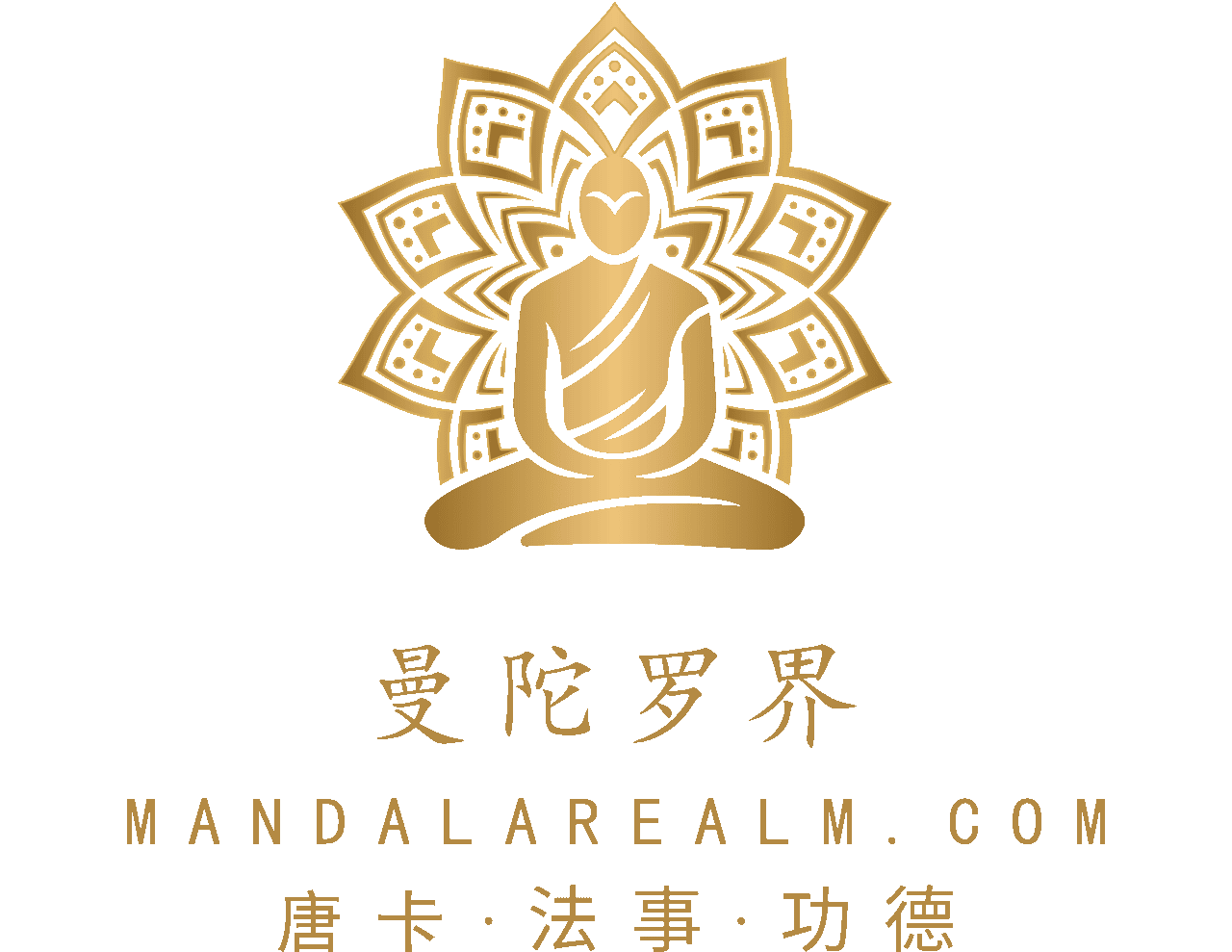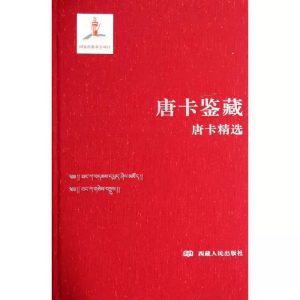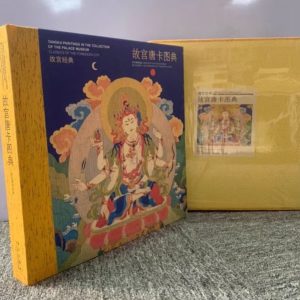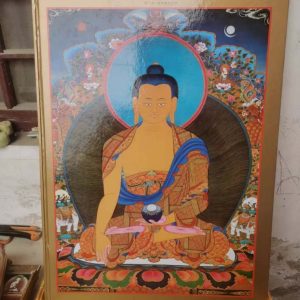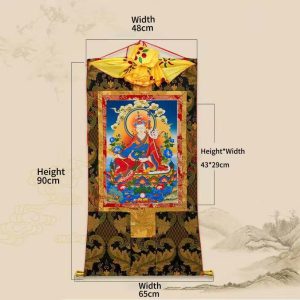Thangka Art: Ancient Wisdom for Modern Serenity – A Guide to Meditation, Stress Relief, and Joy
introduce
In an age when stress and digital overload dominate daily life, thangka art—a centuries-old Tibetan tradition—provides a sanctuary for the mind and soul. Thangkas are not only beautiful Buddhist paintings, they are also a gateway to mindfulness, a tool for emotional release, and a constant companion for those seeking peace. This article explores how thangkas can help modern people meditate, reduce stress, and rediscover happiness.
1. Thangka Meditation: A Visual Journey to Inner Stillness
Thangkas have been used for centuries as aids in Tibetan Buddhist meditation. Today, their calming visuals resonate globally with mindfulness enthusiasts.
Focused Attention Meditation: The detailed imagery of deities like Avalokiteshvara (Compassion Buddha) or Mandala patterns helps quiet mental chatter. Gazing at these symbols shifts the brain into theta waves, a state linked to deep relaxation and creativity.
Breathwork Integration: Pair Thangka viewing with rhythmic breathing—inhale while tracing a lotus motif, exhale while focusing on a deity’s serene expression. This practice reduces cortisol levels, easing stress.
Tip for Beginners: Start with 5-minute sessions using digital Thangkas (available on wellness apps) to build consistency.
2. Thangka as Emotional Alchemy: Transforming Stress into Peace
Thangkas aren’t just art; they’re emotional anchors. Their symbolism and colors work subconsciously to uplift moods.
Color Psychology in Thangka:
Lapis Lazuli Blue: Promotes mental clarity (common in Medicine Buddha Thangkas).
Verdigris Green: Encourages emotional balance (seen in Green Tara paintings).
Gold Leaf Accents: Symbolizes inner radiance, combating feelings of inadequacy.
Narrative Healing: Scenes like the “Wheel of Life” (Bhavachakra) help viewers reframe life’s challenges through a lens of impermanence and growth.
Case Study: A 2022 study in the Journal of Art Therapy found office workers who viewed Thangka art for 10 minutes daily reported 34% lower anxiety levels.
3. Thangka in Modern Spaces: Crafting Serenity at Home and Work
Integrating Thangkas into daily environments turns any room into a retreat for decompression.
Zen Corners: Hang a small Thangka above a meditation cushion or desk. Pair with plants and soft lighting to create a “stress-free zone.”
Digital Detox Tool: Replace screen time with Thangka contemplation. Websites offering printable Thangka coloring pages (e.g., “Mandala Coloring for Adults”) attract traffic while promoting mindfulness.
Energy Flow Enhancement: Position Thangkas in areas where energy stagnates (e.g., hallways). Traditionalists believe deities like Vajrapani (energy protector) harmonize spaces.
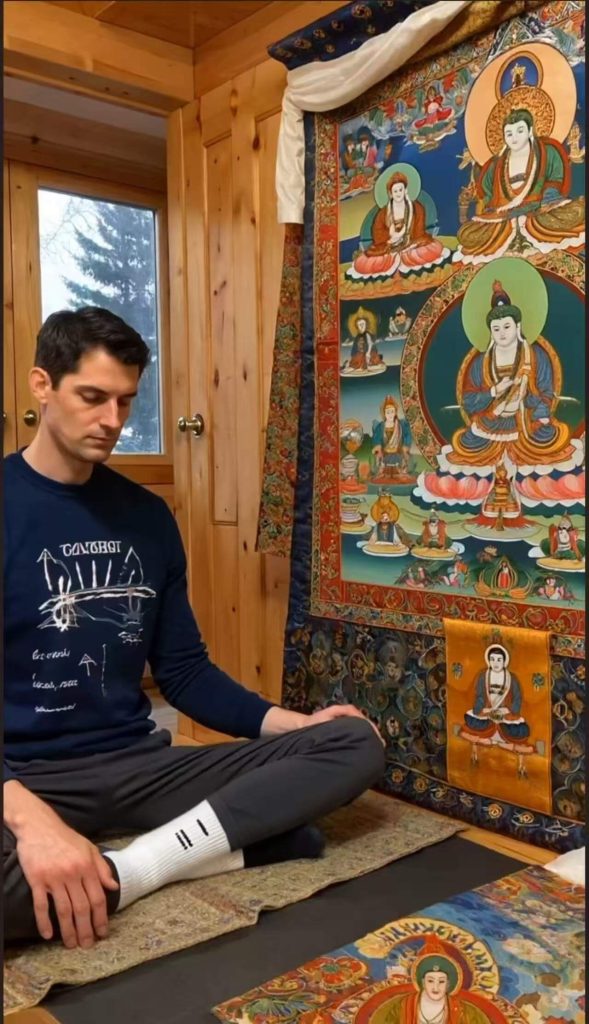
4. The Science Behind Thangka’s Therapeutic Power
Modern research validates what Tibetan monks have known for ages:
Neuroaesthetics: Thangka’s symmetrical patterns activate the brain’s default mode network, fostering introspection and creativity (Dr. Semir Zeki, University College London).
Art Therapy Integration: Drawing Thangka-inspired mandalas is used in PTSD treatment to externalize and release trauma.
Conclusion: Thangka – Connecting the Tranquility of Ancient Times with the Chaos of Modern Times
Thangka art transcends cultural boundaries and provides a universal healing method for people with tired souls.
Click to visit the official website to get your own thangka art
